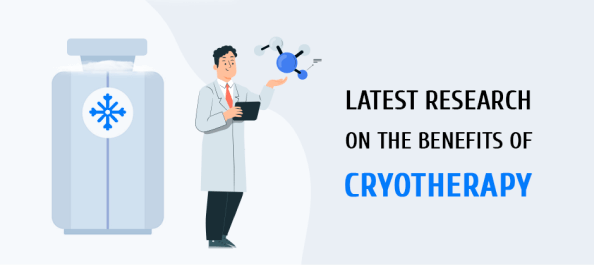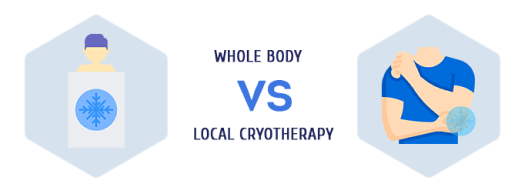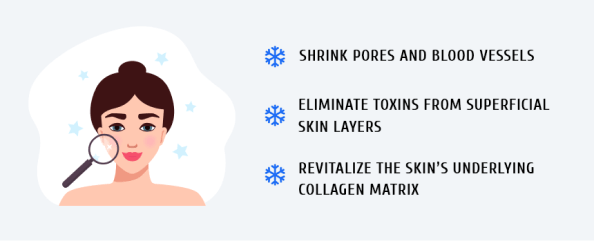
Cryotherapy has been used for centuries to treat injuries, numb pain and reduce inflammation, and cold therapy is standard first aid procedure for soft tissue injuries, putting the “I” in the RICE acronym — rest, ice, compression, elevation. For as long as cryotherapy has been around, you might think the science has been settled. But new technologies and a surge in research have blown the lid off cryotherapy benefits, giving new life to the ancient remedy.
How Cryotherapy Works
The underlying mechanism of cryotherapy is the ability of extreme cold to cause vasoconstriction, a contraction of the endothelium of blood vessels that narrows their diameter for the purpose of shunting blood and fluids to different areas of the body.
A good example of vasoconstriction is the sleepiness you feel after Thanksgiving dinner. It’s not just the tryptophan in the turkey — blood and oxygen are shunted away from your brain to your digestive tract, to help digest your meal. Reduced blood flow to your brain makes you feel sleepy and lethargic.

During cryotherapy, the blood vessels constrict to limit the flow of fluids to the targeted area, to reduce inflammation and expel toxins. At the same time, extreme cold has a numbing effect on nerve endings, dramatically reducing pain. As your body warms again, your blood vessels dilate to bring freshly oxygenated blood and nutrients to the site of injury, to stimulate and support the healing process.
Whole Body vs Local Cryotherapy

In addition to exposing your entire body to extreme cold in a cryo chamber, you have the option to localize your cryotherapy treatment to specific areas of your body. During a local cryotherapy session, a clinician uses a wand-like device to direct a stream of cold nitrogen gas to the targeted tissues.
Local cryotherapy is used to reduce pain and inflammation and accelerate healing after an injury or surgical procedure. It is often used in conjunction with physical therapy. Local cryotherapy can also be effective for treating chronic overuse injuries like tennis elbow or tendonitis in muscles and joints throughout the body.
New Research on Cryotherapy Benefits
Thanks to new technology, cryotherapy has made a quantum leap from simple ice packs and uncomfortable ice baths to more accurate and sophisticated applications. As a result, scientists have begun to explore the benefits of cryotherapy beyond the scope of soft tissue injuries. The research cited below is just a sampling of the many ways cryotherapy is being explored and used in medicine, physical therapy and sports.
Fibromyalgia treatment
The cause of fibromyalgia remains a mystery to scientists, but its symptoms of muscle and joint pain, sleep disturbance, fatigue and depression are very real to the millions of people — mostly female — who suffer from the condition. New research shows that whole body cryotherapy is an effective treatment for reducing the symptoms of fibromyalgia, thereby improving quality of life for fibromyalgia patients.

Soft tissue injuries and surgical procedures
In multiple studies, local cryotherapy has proven effective in reducing musculoskeletal pain, inflammation and dysfunction, and increasing functional range of motion. Local cryotherapy can be a safe and effective alternative to pain medications and anti-inflammatory drugs, with zero negative side effects.
Recovery from sports and exercise
Athletes rely on cryotherapy to speed recovery after intense training or competition. But recently, lengthy and uncomfortable ice baths have been replaced with cryo chambers that use nitrogen gas to freeze the inside of the chamber, surrounding the body in a blast of subzero cold. Research indicates that both whole body and local cryotherapy are highly effective in promoting post-exercise recovery when applied within the first few hours after exercise.
What are the Benefits of a Cryo Facial?
CryoFacial is a cosmetic facial treatment that uses local cryotherapy as one of its tools. CryoFacial gives your skin all the TLC of a traditional facial, with the added power of cold nitrogen gas to reduce inflammation, shrink pores and blood vessels, eliminate toxins from superficial skin layers, and revitalize the skin’s underlying collagen matrix. CryoFacial promotes smoother, more elastic skin with a youthful healthy glow.

Enjoy the Benefits of Cryotherapy in NYC
To get the best whole body and local cryotherapy in Manhattan, visit InVita Wellness on Broadway. Our professional staff is ready to help you get the most cryotherapy benefits from every session. Regular cryotherapy treatments have been shown to increase energy, reduce stress, and support immune function, for a better overall quality of life.
Resources
Abdo, Joe, et al. “Immunotherapy plus cryotherapy: potential augmented abscopal effect for advanced cancers.” Frontiers in oncology 8 (2018): 85.
Klintberg, Ingrid Hultenheim, and Maria EH Larsson. “Shall we use cryotherapy in the treatment in surgical procedures, in acute pain or injury, or in long term pain or dysfunction?-A systematic review.” Journal of Bodywork and Movement Therapies 27 (2021): 368-387.
Kwiecien, Susan Y., and Malachy P. McHugh. “The cold truth: the role of cryotherapy in the treatment of injury and recovery from exercise.” European journal of applied physiology 121.8 (2021): 2125-2142.
Newman, Roland, et al. “Assorted Skin Procedures: Foreign Body Removal, Cryotherapy, Electrosurgery, and Treatment of Keloids.” Primary Care: Clinics in Office Practice 49.1 (2022): 47-62.